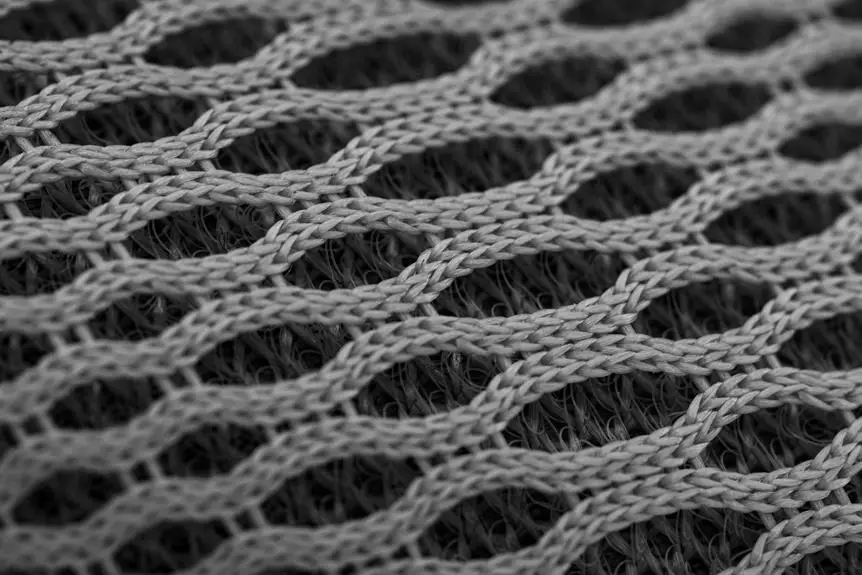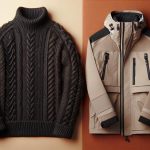When you think of fleece fabric, you might picture cozy blankets or outdoor jackets, but there's much more to this versatile material than meets the eye. Made primarily from polyester, fleece offers impressive warmth and breathability, making it a popular choice for various applications. But how did it come to be, and what makes the different types so unique? Understanding the history, manufacturing process, and benefits of fleece can help you appreciate its place in your wardrobe and home. Let's explore these aspects to uncover what truly sets fleece apart.
Table of Contents
Key Takeaways
- Fleece fabric, developed in 1979, is a synthetic alternative to wool known for its warmth and lightweight properties.
- There are various types of fleece, including microfleece, polar fleece, and performance fleece, each serving different purposes.
- The manufacturing process involves extrusion of polyester fibers, carding, spinning into yarn, and finishing to create the fleece fabric.
- Fleece is easy to care for, machine washable, and often made from recycled materials, making it eco-friendly.
History of Fleece Fabric
Fleece fabric emerged in the late 20th century as a revolutionary alternative to wool, combining warmth and lightweight comfort for outdoor enthusiasts. You mightn't realize that this innovative material was developed in 1979 by Malden Mills, now known as Polartec. The company sought to create a synthetic fabric that would mimic the insulating properties of wool while being more durable and easier to care for.
Initially, fleece was used primarily for outdoor apparel, appealing to hikers and climbers who needed reliable insulation without the bulk. As you explore its development, you'll find that fleece gained popularity in the 1980s and 1990s, becoming a staple in both activewear and casual clothing. Its quick-drying properties and breathability made it a favorite among those who enjoyed outdoor activities in varying weather conditions.
Over the years, manufacturers refined the fabric, introducing different textures and weights, which expanded its application beyond just outdoor gear. Today, fleece is widely used in blankets, jackets, and various fashion items, proving that it's more than just a practical choice; it also offers style and versatility for everyday wear.
Types of Fleece
There are several types of fleece, each designed to meet specific needs and preferences for comfort and performance.
First up is microfleece, which is lightweight and breathable, making it perfect for layering in cooler weather. If you're looking for something warmer, consider polar fleece; it's thicker and offers excellent insulation, ideal for winter activities.
Next, there's sweatshirt fleece, often used in casual wear. It's soft and cozy, providing a relaxed fit that's perfect for lounging or running errands.
For a more technical option, check out performance fleece. This type typically incorporates moisture-wicking properties, making it a great choice for outdoor sports and active lifestyles.
Then, you have anti-pill fleece, which resists those annoying little balls that can form over time. This helps keep your garments looking fresh and new longer.
Manufacturing Process
Understanding the manufacturing process of fleece involves several key steps that transform raw materials into the cozy fabric you love.
It all starts with selecting the right materials, typically polyester or a blend of synthetic fibers. Once the raw fibers are gathered, they undergo a process called extrusion, where they're melted down and forced through spinnerets to create long strands.
After this, the fibers are cooled and cut into small pieces, forming what's known as 'fluff.' This fluff is then carded, a process that aligns the fibers and removes any impurities.
Next, the carded fibers are spun into yarn, which can be knitted or woven to create the fleece fabric.
Once the fabric is formed, it's treated with various processes, such as brushing, to create that soft, fuzzy texture you adore. Afterward, the fleece is dyed and finished, ensuring it meets quality standards.
Benefits of Fleece
This versatile fabric offers a range of benefits, making it a popular choice for clothing and outdoor gear.
One of the standout features of fleece is its incredible warmth. It's lightweight yet provides excellent insulation, keeping you cozy during chilly weather without weighing you down.
You'll also appreciate how soft and comfortable fleece feels against your skin, making it perfect for lounging or outdoor adventures. Plus, it's highly breathable, allowing moisture to escape while keeping you dry.
Fleece is also easy to care for; it's machine washable and quick to dry, so you can spend less time on laundry and more time enjoying your activities. Its durability means it can withstand regular use, making it a long-lasting option in your wardrobe.
Another significant advantage is its ability to resist pilling, which helps maintain its appearance over time.
Lastly, fleece is often made from recycled materials, making it an eco-friendly choice that aligns with sustainable practices.
With all these benefits, it's no wonder fleece remains a favorite among outdoor enthusiasts and casual wearers alike.
Common Uses of Fleece
Fleece is commonly used in various applications, including outdoor apparel, blankets, and activewear, thanks to its warmth and comfort. You'll often find fleece jackets and pullovers that keep you cozy during chilly hikes or casual outings. Its lightweight nature makes it easy to layer, allowing you to adjust to changing temperatures without feeling weighed down.
In addition to clothing, fleece blankets are a popular choice for snuggling on the couch or staying warm during outdoor events. They provide a soft, inviting texture that enhances relaxation. You might also consider fleece throws for added comfort in your home, as they come in various colors and designs to fit your decor.
Fleece is also ideal for activewear, as it wicks moisture away from your body while keeping you warm. Whether you're running, hiking, or participating in other outdoor activities, fleece-lined leggings or tops can help regulate your body temperature.
Additionally, fleece is often used in pet products, like beds and jackets, ensuring your furry friends stay comfortable too. With its versatility, fleece truly meets a range of needs in your daily life.
Care and Maintenance
To keep your fleece items looking and feeling their best, proper care and maintenance are essential. Fleece is known for its soft texture and warmth, but if you don't treat it right, it can lose its charm. Follow these simple tips to ensure longevity.
| Care Tips | What to Avoid |
|---|---|
| Wash in cold water | Hot water |
| Use mild detergent | Fabric softeners |
| Air dry or tumble dry on low | High heat drying |
When washing fleece, always opt for a gentle cycle in cold water to maintain its softness. Avoid using fabric softeners, as they can break down the fibers over time. Instead, a mild detergent works wonders.
If you need to dry your fleece, use a low heat setting or hang it to air dry. High heat can cause shrinkage and damage the fabric. By following these guidelines, your fleece will remain cozy and vibrant, so you can enjoy it for many seasons to come. Remember, a little care goes a long way in extending the life of your favorite fleece items!
Sustainable Options in Fleece
Exploring sustainable options in fleece can lead you to eco-friendly materials and practices that benefit both your wardrobe and the planet.
One popular choice is recycled polyester fleece, made from post-consumer plastic bottles. By opting for this material, you're not only reducing waste but also conserving resources since it requires less energy to produce compared to virgin polyester.
You might also consider organic cotton fleece, which is grown without harmful pesticides and fertilizers. This option is gentler on the environment and often softer on your skin.
Additionally, some brands are now using Tencel, a fiber made from sustainably sourced wood pulp. Tencel fleece is biodegradable and produced in a closed-loop process that minimizes water and chemical use.
When shopping for fleece, look for certifications like Global Recycled Standard or OEKO-TEX, which assure you that the materials are responsibly sourced.
Supporting brands that prioritize sustainability can make a significant difference in reducing your environmental footprint.
Frequently Asked Questions
Can Fleece Fabric Be Recycled?
Yes, you can recycle fleece fabric! Many recycling centers accept it, especially if it's made from recycled materials like plastic bottles. Just check with your local facility to see their specific guidelines for recycling fleece.
Is Fleece Fabric Hypoallergenic?
Fleece fabric isn't typically considered hypoallergenic, but it generally doesn't irritate most people's skin. If you have sensitivities, you should test a small area first to ensure you don't experience any reactions.
What Are the Environmental Impacts of Fleece Production?
Fleece production can significantly impact the environment. It often involves petroleum-based materials, contributing to pollution and waste. Additionally, microplastics released during washing can harm marine ecosystems, making it essential to consider sustainable alternatives when choosing fleece products.
Does Fleece Fabric Retain Odors?
Yes, fleece can retain odors, especially if it's not washed regularly. It's important to clean your fleece garments after use to prevent lingering smells, as synthetic fibers can trap odors more than natural fabrics do.
How Does Fleece Compare to Wool?
When comparing fleece to wool, you'll find fleece is lighter and dries faster, while wool provides better insulation and moisture-wicking. Each has its benefits, depending on your needs for warmth, weight, and durability.
- Tetron Fabric HS Code: Import and Export Information - June 17, 2025
- Tetron Fabric 36 Length of Roll: What You Need to Know - June 17, 2025
- Tetron Fabric 36: Specifications and Uses - June 17, 2025







